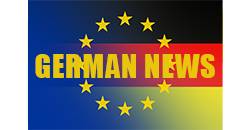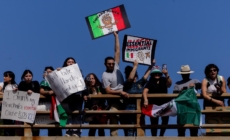-
Cory Mills Should Be at Least as Famous as George Santos - 9 mins ago
-
Map Shows China Surrounded by Conflicts - 37 mins ago
-
Netanyahu, Aiming to Capture Gaza City, Reverts to a Failed Military Strategy - 53 mins ago
-
Canyon Fire Map, Update as California Blaze Explodes in Size Near Lake Piru - about 1 hour ago
-
Trump Nominates Stephen Miran to Temporarily Join Fed Board of Governors - 2 hours ago
-
US Issues Update on New Hypersonic Weapon - 2 hours ago
-
Japan Says Trump to Correct ‘Extremely Regrettable’ Error in Tariff Order - 2 hours ago
-
Who Is Carmine Faino? Suspect In Pennsylvania State Trooper Shooting - 2 hours ago
-
Ron DeSantis Responds to Judge Ordering Halt to Alligator Alcatraz - 3 hours ago
-
Trump Wasn’t the First to Deport These Men, and He Won’t Be the Last - 3 hours ago
The start of California’s fire season has moved up 6 weeks since 1990 thanks to climate change
You are not imagining it. Fire season in California is indeed starting earlier and lasting longer in virtually every region of California than it did two decades ago, researchers have found, thanks largely to human-caused climate change.
In the Sierra Nevada, fire season starts about 24 days earlier than it did in the early 1990s. In the Northern Basin and Range region, which runs along the northernmost border with Nevada, it’s 31 days earlier.
And in the Cascade Range, which runs into Oregon, fire season now begins 46 days earlier than it once did, according to a study published this week in the journal Science Advances.
“Anecdotally, those of us living here have this sense that it’s been happening sooner,” said Amanda Fencl, a Berkeley-based water specialist who directs climate science for the climate and energy program at the Union of Concerned Scientists and was not directly involved with the research. “This is really an important study to quantify just how soon and where it is shifting, and to what extent.”
Newsletter
Toward a more sustainable California
Get Boiling Point, our newsletter exploring climate change, energy and the environment, and become part of the conversation — and the solution.
You may occasionally receive promotional content from the Los Angeles Times.
Although the number of people living in California has grown by roughly 27% since the early 1990s, human-ignited fires have dropped significantly during that time, enabling the researchers to rule out human-caused blazes as the source of the additional burn days.
Rather, the most significant factors shoving fire season forward are climate-related, they found: an earlier snowmelt and increased drying of soils and flammable vegetation as average temperatures rise.
“The main driver is the climate and meteorological conditions,” said Gavin D. Madakumbura, a UCLA postdoctoral researcher and the study’s lead author.
The effect is particularly pronounced in Northern California, where, in some regions, fire has become a near-constant threat.
“It’s often said we no longer [have] a wildfire season, but that wildfire season is all year, and that’s tied to warming temperatures,” said James Thorne, a UC Davis landscape ecologist who was not involved with the research.
Definitively linking longer fire seasons to anthropogenic climate change, as this paper does, is “a study I’ve been hoping someone would do for a long time,” he said.
California is already on pace to see more fires and significantly more burned acreage than it did last year.
More than 220,000 acres have burned in the state as of mid-July, almost 100,000 acres more than California has seen on average at this point in the year over the last five years, according to the California Department of Forestry and Fire Protection.
That total does not include the 96,000 acres burned in the Gifford fire, which was 15% contained as of Thursday, nor three different fires that started Monday in Southern California that together have burned more than 2,800 acres and are not yet contained.
It’s also the worst year on record for fire-related economic damages.
In 2018, the year the Camp fire destroyed the town of Paradise and killed more people than any wildfire in California history, wildfire damages statewide were an estimated $148.5 billion.
The Palisades and Eaton fires in January may have caused up to $164 billion in damages, a UCLA study found.
Times staff writer Grace Toohey contributed to this report.
Source link

















